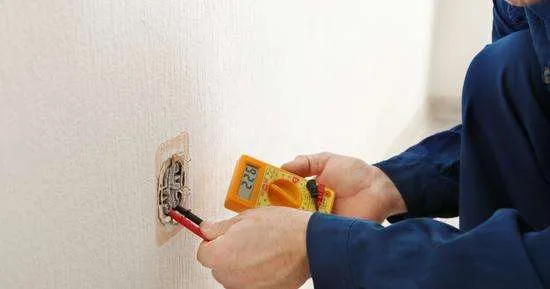Today we will learn how to test a short-to-ground with a multimeter. Short to the ground is a condition where a live wire is found touching some other element that is harmful to it, because of which it gets grounded. It will cause a direct leakage in your circuit. The breaker will be tripped if it happens to any of your electrical appliances.
To solve the problem, you have to test the short to ground. This can be tested by using any electrical instrument to measure the resistance. But using a multimeter will make your work easier.
Table of Contents
ToggleHow to check short to ground with a multimeter
Here we give you a quick overview of how to test short to ground with a multimeter. Usually, a conductor or circuit with minimal resistance (near 0 ohms) is considered an excellent current-carrying path.
- Turn Off all the appliances.
- Take all the switches out of the sockets.
- Turn OFF the breaker.
- Set the multimeter on the Resistance option.
- Set one lead of the multimeter at one end of the circuit.
- Connect the second lead to a perfect ground
- Read the readings from the display screen
- If you get the infinity readings as a result, then there is no short to the ground present.
- If you get any readings except infinity resistance, then there is a Short to-ground present, which should be fixed immediately.
Read the process thoroughly to properly understand how to check short to ground using a multimeter.
-
Choose the suitable multimeter:
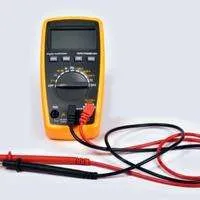
There are many gadgets to check out the Short to ground condition, but a digital and automotive multimeter is more helpful.
So choose the multimeter, which has the proper settings for testing the resistance because this is the important requirement of testing the short to ground.
-
Set the multimeter:
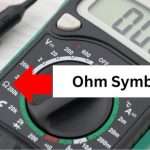
Setting a multimeter is important because, without this, you will not be able to check the Short ground condition. For this, you have to turn the multimeter’s dial towards the Ohms and resistance option.
Now your multimeter is ready to check out the presence of Short to ground conditions.
-
Switch OFF the appliances:
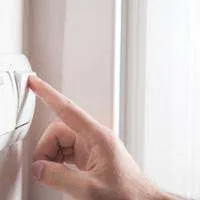
This is a point that most people don’t know, and they end up damaging their home appliances because of a short circuit. When you check short to ground, ensure you have switched off all the appliances.
If you leave any of the appliances turned ON, the short circuit will damage it completely, which will be a big loss.
So please turn off all the buttons and remove all the switches of your electrical appliances to save them from any future damage.
-
Turn OFF the breaker:
At this point, it is very important to turn off the breaker to save your appliances from short circuits. There should be 0 Voltage in the circuit, which you can check by inserting the multimeter’s probes. Only start the test if there is no current in the circuit.
-
Set the leads:
It’s time to set the leads to get your test results. For this, you have to attach one lead of the multimeter with the circuit and the second lead to a perfect ground and wait for the readings to get calculated.
-
Check the results:
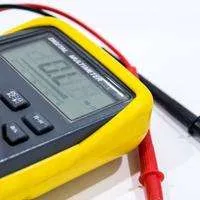
Now the display screen will display the result in front of you, which you have to notice and examine whether there is any short to the ground present there or not.
If you get an infinite resistance OL value, your circuit is in good condition, there is no need to replace anything, and there is no short-to-ground present. But if the result shows any value except infinite, it is a sign of the Short to ground presence.
Precautions:
Please take into account some important precautionary measures while using the multimeter for checking short to ground because it is a matter of electricity. It can also damage your home appliances within seconds if you don’t take notice of the precautions.
- Before performing the test, make sure there is no current running in the circuit.
- Make sure your breaker is off during the test because if it gets tripped at this condition, you will not be able to set it again until you did not resolve the whole problem deeply.
- Put the leads in the accurate ports.
- Please do not touch the wires while checking the short to ground; otherwise, it may cause severe damage.
What to do if the result shows no Short to ground present?
If you get an infinite O.L resistance value, there is no Short to ground present, so in that case, your breaker is tripping again and again because of a problem like low current flow.
So, in this case, you have to call an electrician who will resolve the issue by accessing the main panel.
Factors responsible for the Short to ground:
Shorting to the ground can occur for different reasons, including any breakage and damage in the wire, switch, or faulty breaker. The multimeter will help you to check whether there is a Short to the ground present or not.
After getting the corresponding results, you can permanently contact the electrician to resolve your issue.
Final Verdict:
So how to test short to ground with multimeter? Short to the ground can occur because of many reasons. But it is important to know the condition immediately; otherwise, this will damage your appliances. Once your breaker starts tripping, it is a sign that there is a problem with the circuit or the breaker.
So check the short to ground using a multimeter, as it will help you know the exact situation because your breaker is tripping. It will be easy for you to solve the problem and to take your appliances out of danger of getting harmed by any future short circuit.
Related Guides:

